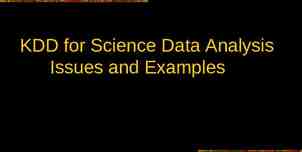Custom Objects: The Basics, Tips, and Tricks Julie Workman
18 Slides4.95 MB
Custom Objects: The Basics, Tips, and Tricks Julie Workman Director of Technology [email protected] @juliewworkman
Safe Harbor Safe harbor statement under the Private Securities Litigation Reform Act of 1995: This presentation may contain forward-looking statements that involve risks, uncertainties, and assumptions. If any such uncertainties materialize or if any of the assumptions proves incorrect, the results of salesforce.com, inc. could differ materially from the results expressed or implied by the forward-looking statements we make. All statements other than statements of historical fact could be deemed forward-looking, including any projections of product or service availability, subscriber growth, earnings, revenues, or other financial items and any statements regarding strategies or plans of management for future operations, statements of belief, any statements concerning new, planned, or upgraded services or technology developments and customer contracts or use of our services. The risks and uncertainties referred to above include – but are not limited to – risks associated with developing and delivering new functionality for our service, new products and services, our new business model, our past operating losses, possible fluctuations in our operating results and rate of growth, interruptions or delays in our Web hosting, breach of our security measures, the outcome of any litigation, risks associated with completed and any possible mergers and acquisitions, the immature market in which we operate, our relatively limited operating history, our ability to expand, retain, and motivate our employees and manage our growth, new releases of our service and successful customer deployment, our limited history reselling non-salesforce.com products, and utilization and selling to larger enterprise customers. Further information on potential factors that could affect the financial results of salesforce.com, inc. is included in our annual report on Form 10-K for the most recent fiscal year and in our quarterly report on Form 10-Q for the most recent fiscal quarter. These documents and others containing important disclosures are available on the SEC Filings section of the Investor Information section of our Web site. Any unreleased services or features referenced in this or other presentations, press releases or public statements are not currently available and may not be delivered on time or at all. Customers who purchase our services should make the purchase decisions based upon features that are currently available. Salesforce.com, inc. assumes no obligation and does not intend to update these forward-looking statements.
Introductions
Julie Workman, MS Director of Technology, Blue Star Families
Custom Object Takeaways Unleash the power of custom objects with 1. What are custom objects, really? 2. How to use Schema Builder to understand relationships and model new functionality 3. Understanding considerations when creating objects 4. Object Permissions and access 5. Best Practices
What are custom objects?
Why are Custom Objects so Awesome? Your business needs are unique, complex, and changing Custom objects connect the dots between data sets Custom objects can drive user adoption Flexibility in design
Use Build Create Objects A step-by-step process to create new objects Custom Object Definition Edit Think through that Record Name Label and Format bit!
To Tab, or Not To Tab Just how visible do you want the data in this object to be? Consider Record creation capability, especially for “child” records Search results, reporting, access Use description fields always Careful! Don’t “Include Tab” for every custom App! Still to do: CRED permissions
We have a Custom Object! Awesomeness! What do we have at this point? Standard Fields Name Field Audit Fields Tab Report type Page Layout You know about that Awesome blue rectangle, right?
Object Visibility Will users see the new object? Tabs: Go or no go? Search ability Visibility in Apps—consider including for parent objects Apps: Include your tab in apps of interest Permissions: When creating a new object, visibility depends on Enterprise, Unlimited, Performance, and Developer: depends on “View All Data” or “Modify All Data” disabled Contact Manager, Group, and Professional Editions: CRED permissions are enabled for all profiles Sharing: controlled by OWD Delegating Administration: to non-administrator owners Queues: distributing ownership of records Search: finding custom object records
Use Schema Builder Understand relationships and create/edit objects manually Schema Builder is the visual display of your data model (Setup Build Schema Builder) Lean on your Sandboxes— create and model your solutions freely
Creating Objects using Schema Builder Almost too easy Toggle between Objects and Elements
Model and Understand Relationships Relationships demonstrate the flow of data across objects De-clutter your view using Clear All Isolate objects of interest View, modify relationships and fields using Elements
Object Configuration Don’t stop yet! Review Object level permissions and access Field History Tracking Chatter Feed tracking Reporting Data import Ongoing data quality management
Best Practices Keep your org out of Spaghetti Junction! -Spaghetti Junction by Rhodes Rumsey
Best Practices How to avoid Spaghetti Junction Good governance is key to maintaining org health. Create object-level help Use multiple developer orgs to model functionality Consistency is Key
Thank you























